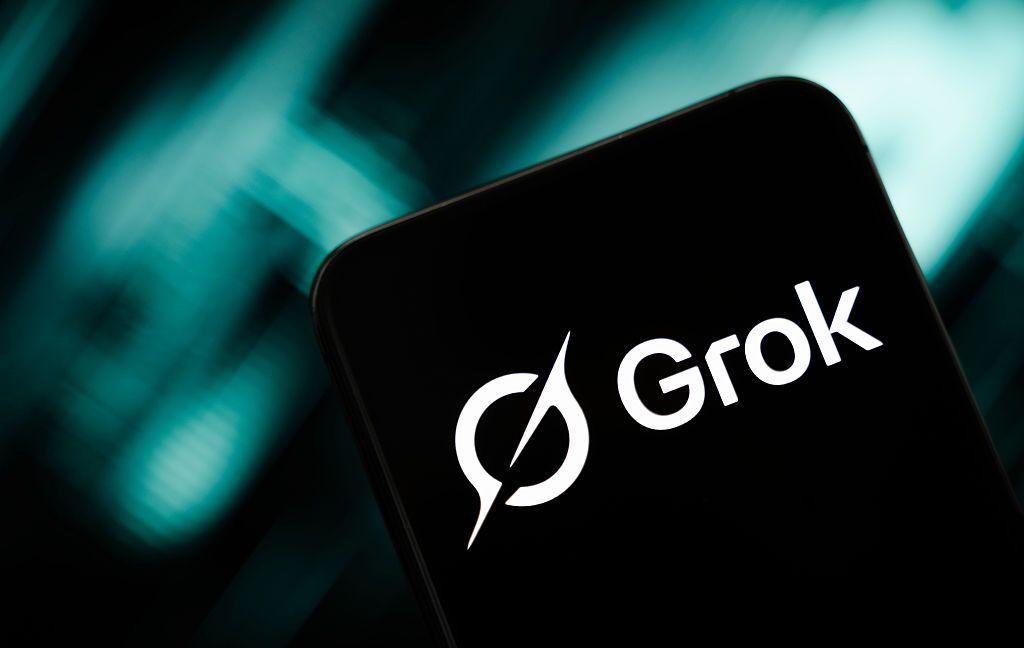ChatGPT-4 Matches Radiologists in Pancreatic Cyst Analysis, Promising Efficient Healthcare
2 Sources
2 Sources
[1]
ChatGPT matches radiologists in pancreatic cyst analysis
American College of SurgeonsJul 15 2025 Artificial intelligence (AI) models such as ChatGPT are designed to rapidly process data. Using the AI ChatGPT-4 platform to extract and analyze specific data points from the Magnetic Resonance Imaging (MRI) and computed tomography (CT) scans of patients with pancreatic cysts, researchers found near-perfect accuracy when compared directly against the manual approach of chart review performed by radiologists, according to a study published in the Journal of the American College of Surgeons (JACS). ChatGPT-4 is a much more efficient approach, is cost effective, and allows researchers to focus on data analysis and quality assurance rather than the process of reviewing chart after chart. Our study established that this AI approach was essentially equally as accurate as the manual approach, which is the gold standard." Kevin C. Soares, MD, MS, study coauthor, hepatopancreatobiliary cancer surgeon at Memorial Sloan Kettering Cancer Center, New York City Using an existing database of nearly 1,000 adult patients with pancreatic lesions under surveillance between 2010 and 2024 at Memorial Sloan Kettering Cancer Center in New York City, ChatGPT-4 was deployed to identify nine clinical variables used to monitor cyst progression: cyst size, main pancreatic duct size, number of lesions, main pancreatic duct dilation, branch duct dilation, presence of solid component, calcific lesion, pancreatic atrophy, and pancreatitis. Pancreatic cysts are common and require ongoing surveillance because some develop into cancer and require surgery. Researchers evaluated ChatGPT-4's ability to identify and classify these nine factors associated with increased risk for dysplasia and cancer. A manually annotated institutional cyst database was used as the standard for comparison. Key Findings The study involved 3,198 unique MRI and CT scans from 991 patients under long-term surveillance for premalignant lesions. ChatGPT-4 successfully extracted clinical variables with high accuracy. The accuracy rate ranged from 97% for a solid component, a high-risk variable, to 99% for calcific lesions. Accuracy was 92% for cyst size and 97% for main pancreatic duct size, other high-risk variables that may indicate cancer and require surgical resection, biopsy, or endoscopic ultrasound. "AI can help us expand medical research and improve patient outcomes," Dr. Soares said. "The question I get asked most often is, 'What is the chance that this cyst is going to develop into cancer?' We now have an efficient way to look at the MRI and CT scans of thousands of patients and give our patients a better answer. This approach goes a long way to reduce anxiety and help patients feel more confident about their treatment decisions." While this was a proof-of-concept study, moving forward the study authors say they would like to use AI to expand the number of research questions they ask to enhance patient care. "There is a lot of interest in understanding if AI can predict who is going to develop cancer. It's important to understand who progresses and why, so we have a better chance at tailoring surveillance," Dr. Soares said. "We want to limit the number of patient visits, costs to the health care industry, and ultimately provide a customized, rather than one-size-fits-all approach to surveillance." The researchers caution that the study used only one AI source, ChatGPT-4, and results are limited to the data that was used. AI can only work with the information that is handed to it. These limitations may reduce the broader applicability of the findings. Coauthors are Ankur P. Choubey, MD, MPH; Emanuel Eguia, MD, MS; Alexander Hollingsworth, MS; Subrata Chatterjee, PhD; Remo Alessandris, MD; Misha T. Armstrong, MD, MPH; Emily Manin, MD; Lily V. Saadat, MD; Jennifer Flood, MSN; Avijit Chatterjee, PhD; Vinod P. Balachandran, MD, FACS; Jeffrey A. Drebin, MD, PhD, FACS; T. Peter Kingham, MD, FACS; Michael I. D'Angelica, MD, FACS; William R. Jarnagin, MD, FACS; Alice C. Wei, MD, MSc, FACS; Vineet S. Rolston, MD; Mark A. Schattner, MD; and Richard K. G. Do, MD, PhD. American College of Surgeons Journal reference: Choubey, A. P., et al. (2025). Data Extraction and Curation from Radiology Reports for Pancreatic Cyst Surveillance Using Large Language Models. Journal of the American College of Surgeons. doi.org/10.1097/xcs.0000000000001478.
[2]
Artificial Intelligence Accurately Classifies Pancreatic Cysts | Newswise
* MRI and CT scans of nearly 1,000 adults were evaluated by ChatGPT-4 and the traditional manual approach for pancreatic cysts. * The accuracy of AI was equivalent to human performance in identifying and classifying nine clinical variables used to monitor pancreatic cyst progression. Newswise -- CHICAGO -- Artificial intelligence (AI) models such as ChatGPT are designed to rapidly process data. Using the AI ChatGPT-4 platform to extract and analyze specific data points from the Magnetic Resonance Imaging (MRI) and computed tomography (CT) scans of patients with pancreatic cysts, researchers found near-perfect accuracy when compared directly against the manual approach of chart review performed by radiologists, according to a study published in the Journal of the American College of Surgeons (JACS). "ChatGPT-4 is a much more efficient approach, is cost effective, and allows researchers to focus on data analysis and quality assurance rather than the process of reviewing chart after chart," said study coauthor Kevin C. Soares, MD, MS, a hepatopancreatobiliary cancer surgeon at Memorial Sloan Kettering Cancer Center in New York City. "Our study established that this AI approach was essentially equally as accurate as the manual approach, which is the gold standard." Using an existing database of nearly 1,000 adult patients with pancreatic lesions under surveillance between 2010 and 2024 at Memorial Sloan Kettering Cancer Center in New York City, ChatGPT-4 was deployed to identify nine clinical variables used to monitor cyst progression: cyst size, main pancreatic duct size, number of lesions, main pancreatic duct dilation, branch duct dilation, presence of solid component, calcific lesion, pancreatic atrophy, and pancreatitis. Pancreatic cysts are common and require ongoing surveillance because some develop into cancer and require surgery. Researchers evaluated ChatGPT-4's ability to identify and classify these nine factors associated with increased risk for dysplasia and cancer. A manually annotated institutional cyst database was used as the standard for comparison. Key Findings * The study involved 3,198 unique MRI and CT scans from 991 patients under long-term surveillance for premalignant lesions. * ChatGPT-4 successfully extracted clinical variables with high accuracy. The accuracy rate ranged from 97% for a solid component, a high-risk variable, to 99% for calcific lesions. * Accuracy was 92% for cyst size and 97% for main pancreatic duct size, other high-risk variables that may indicate cancer and require surgical resection, biopsy, or endoscopic ultrasound. "AI can help us expand medical research and improve patient outcomes," Dr. Soares said. "The question I get asked most often is, 'What is the chance that this cyst is going to develop into cancer?' We now have an efficient way to look at the MRI and CT scans of thousands of patients and give our patients a better answer. This approach goes a long way to reduce anxiety and help patients feel more confident about their treatment decisions." While this was a proof-of-concept study, moving forward the study authors say they would like to use AI to expand the number of research questions they ask to enhance patient care. "There is a lot of interest in understanding if AI can predict who is going to develop cancer. It's important to understand who progresses and why, so we have a better chance at tailoring surveillance," Dr. Soares said. "We want to limit the number of patient visits, costs to the health care industry, and ultimately provide a customized, rather than one-size-fits-all approach to surveillance." The researchers caution that the study used only one AI source, ChatGPT-4, and results are limited to the data that was used. AI can only work with the information that is handed to it. These limitations may reduce the broader applicability of the findings. Coauthors are Ankur P. Choubey, MD, MPH; Emanuel Eguia, MD, MS; Alexander Hollingsworth, MS; Subrata Chatterjee, PhD; Remo Alessandris, MD; Misha T. Armstrong, MD, MPH; Emily Manin, MD; Lily V. Saadat, MD; Jennifer Flood, MSN; Avijit Chatterjee, PhD; Vinod P. Balachandran, MD, FACS; Jeffrey A. Drebin, MD, PhD, FACS; T. Peter Kingham, MD, FACS; Michael I. D'Angelica, MD, FACS; William R. Jarnagin, MD, FACS; Alice C. Wei, MD, MSc, FACS; Vineet S. Rolston, MD; Mark A. Schattner, MD; and Richard K. G. Do, MD, PhD. The study is published as an article in press on the JACS website. Author Disclosures: This work was funded in part by NIH/National Cancer Institute P30 CA008748 Cancer Center Support Grant. Citation: Large Language Models Enable Accurate Data Extraction and Curation from Radiology Reports for Pancreatic Cyst Surveillance. Journal of the American College of Surgeons. DOI: 10.1097/XCS.0000000000001478 # # # About the American College of Surgeons The American College of Surgeons (ACS) is a scientific and educational organization of surgeons that was founded in 1913 to raise the standards of surgical practice and improve the quality of care for all surgical patients. The ACS is dedicated to the ethical and competent practice of surgery. Its achievements have significantly influenced the course of scientific surgery in America and have established it as an important advocate for all surgical patients. The ACS has approximately 90,000 members and is the largest organization of surgeons in the world. "FACS" designates that a surgeon is a Fellow of the ACS. Follow the ACS on social media: X | Instagram | YouTube | LinkedIn | Facebook
Share
Share
Copy Link
A study shows that ChatGPT-4 can accurately analyze pancreatic cysts from MRI and CT scans, matching the performance of radiologists. This AI application could streamline patient care and reduce healthcare costs.

AI Matches Radiologists in Pancreatic Cyst Analysis
A groundbreaking study published in the Journal of the American College of Surgeons has demonstrated that ChatGPT-4, an artificial intelligence model, can match the accuracy of radiologists in analyzing pancreatic cysts from medical imaging
1
2
. This development could potentially revolutionize the way healthcare professionals monitor and treat patients with pancreatic lesions.Study Design and Methodology
Researchers at Memorial Sloan Kettering Cancer Center in New York City conducted the study using an existing database of nearly 1,000 adult patients with pancreatic lesions under surveillance between 2010 and 2024
1
. The team deployed ChatGPT-4 to identify and analyze nine clinical variables crucial for monitoring cyst progression:- Cyst size
- Main pancreatic duct size
- Number of lesions
- Main pancreatic duct dilation
- Branch duct dilation
- Presence of solid component
- Calcific lesion
- Pancreatic atrophy
- Pancreatitis
These factors are associated with an increased risk of dysplasia and cancer, making their accurate identification essential for patient care
2
.Key Findings and Accuracy Rates
The study involved 3,198 unique MRI and CT scans from 991 patients
1
2
. ChatGPT-4 demonstrated impressive accuracy in extracting and analyzing the clinical variables:- 97% accuracy for identifying solid components (a high-risk variable)
- 99% accuracy for detecting calcific lesions
- 92% accuracy for measuring cyst size
- 97% accuracy for determining main pancreatic duct size
Dr. Kevin C. Soares, a study coauthor and hepatopancreatobiliary cancer surgeon at Memorial Sloan Kettering Cancer Center, emphasized the efficiency and cost-effectiveness of the AI approach
1
. He stated, "Our study established that this AI approach was essentially equally as accurate as the manual approach, which is the gold standard."Related Stories
Implications for Patient Care and Research
The successful application of AI in this context has significant implications for both patient care and medical research:
-
Improved Patient Communication: Dr. Soares noted that the AI-driven approach could help provide patients with more accurate information about their condition, potentially reducing anxiety and improving treatment decision-making
1
. -
Efficient Data Analysis: By automating the process of reviewing medical images, researchers can focus more on data analysis and quality assurance rather than time-consuming manual chart reviews
2
. -
Potential for Personalized Medicine: The researchers express interest in using AI to predict cancer development and tailor surveillance strategies, moving away from a one-size-fits-all approach
1
2
.
Limitations and Future Directions
While the results are promising, the researchers caution that the study has limitations:
- Only one AI source (ChatGPT-4) was used
- Results are limited to the specific dataset used
- The broader applicability of the findings may be reduced due to these constraints
1
Moving forward, the research team aims to expand the use of AI to address more complex research questions and enhance patient care
2
. Dr. Soares emphasized the potential for AI to help predict cancer development and optimize surveillance strategies, potentially reducing healthcare costs and improving outcomes1
.This study represents a significant step forward in the application of AI in medical imaging analysis, particularly for pancreatic cyst surveillance. As the technology continues to evolve, it may play an increasingly important role in supporting healthcare professionals and improving patient care.
References
Summarized by
Navi
[1]
Related Stories
Recent Highlights
1
Grok faces global investigations as xAI blames users for AI-generated CSAM and deepfakes
Policy and Regulation

2
Hyundai to deploy 30,000 Atlas robots in car factories by 2028, beating Tesla to production
Technology

3
Instagram Chief Warns AI Images Are Outpacing Our Ability to Distinguish Real from Fake
Technology








